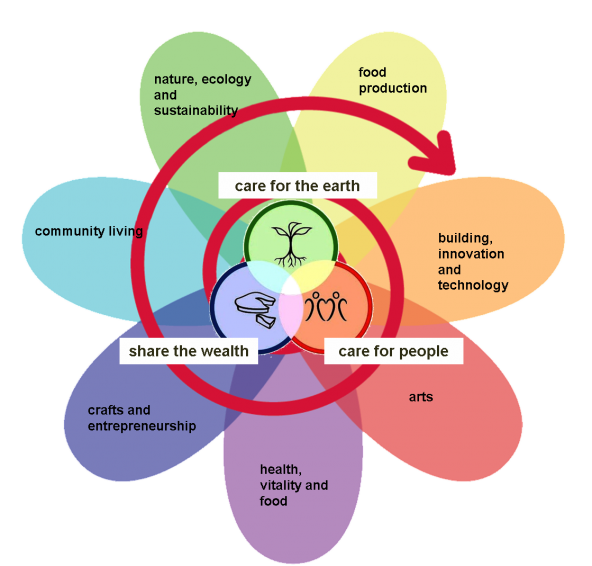
Our civilization goes through cycles of incremental and radical change, where the ethical landscape shifts depending on our collective agency and the circumstances we’re faced with at a given time. As humanity innovates itself into a modern day, technologically dependent society, our ethical considerations have increased significantly. Our conflict is, as Carl Sagan put it, “...when awesome technological powers are in the hands of a very few, and no one representing the public interest can even grasp the issues (Sagan).” To this end, ethicists have devised several tools that help us consider the possible consequences of technological innovation, and how we might minimize the negative impact and maximize the benefit to the present and future.

What influence will the invention of today have on our community tomorrow? To consider this the Ethical Technological Assessment (eTa) was designed for the purpose of giving innovators and developers a means to predict the impact their newly developed technology will have on society, and the moral considerations that may arise once this technology is adopted (Boenink, Swierstra, and Stemerding). An eTa of Apple’s original iPhone might have suggested that we would quickly become dependant on the instant gratification of having just about everything accessible at the end of our fingertips. What it would not have predicted is that anyone with a smartphone can record a livestream video on the internet with 3.2 billion other people having the ability to watch (“Internet Used by 3.2 Billion in 2015”), and how such a profound impact on the world gave way for events like Arab Spring via social media (Wolfsfeld, Segev, and Sheafer).
To meet the challenges of understanding the impact innovation might have on our future the Scenario Method gives us an idea of four possible outcomes. Will technological promises come to fruition and fast, or fall short and come at a crawl? Can society adapt, and will they do so eagerly, or with hesitation? A variation of these considerations make up four scenarios (Boenink, Swierstra, and Stemerding). Augmented reality (AR) is a natural evolution of the smartphone, integrating the virtual world with the real world (“What Is Augmented Reality (AR)?”). If humanity became reliant on this technology in everyday life, it is possible we may find it has many vulnerabilities that can do unforeseeable harm; such as the AR game Pokémon Go, that took hold of everyone’s phones so fast, no one thought people would be falling in lakes or walking into traffic trying to “Catch em all!” (DenglerNov. 27, 2017, and Pm). Using the Scenario Method helps us to make the most ethical choice to the best of our ability, but it does not predict how society will react with much accuracy as its measurement is based on the morality of today, instead of a society that has adapted to technological advancements.

With the invention of object avoidance software and self driving cars, the adage of ‘don’t walk in traffic’ might someday end up an idiom nobody remembers the origin of. The adoption of automation created a ripple effect that is already changing the habits of society. The evolution of ethics can be witnessed at your local McDonalds. One in four people under the age of 34 prefer to order from the automated kiosk, and four out of five people over that age feel more comfortable ordering via person at the counter (Quora). The quandary here, is the controversial claim that automated kiosks are putting workers out of jobs. The Techno-ethical Scenario system was created to show how cultural shifts like the aforementioned might arise with the adoption of new technologies. It fleshes out the most prominent ethical dilemmas by analyzing past debates, and comparing the recurrence of certain tropes. This helps to predict potential positive and negative outcomes, and future concerns (Boenink, Swierstra, and Stemerding).
Playing the long game…
With technology advancing exponentially and radical change on the horizon, it would be prudent to reevaluate our decisions at every new frontier so that we can better navigate the most optimal path forward. Without playing the long game, every choice we make has the possibility to create a cascade of failure that humanity may not be able to innovate its way out of. If we work diligently with every tool at our disposal, we can avert desperation and let hope be our guide through this ethical landscape toward a future worth passing on.
Bibiography
Boenink, Marianne, Tsjalling Swierstra, and Dirk Stemerding. “Anticipating the Interaction between Technology and Morality: A Scenario Study of Experimenting with Humans in Bionanotechnology.” Studies in Ethics, Law, and Technology 4.2 (2010): n. pag. DOI.org (Crossref). Web. 19 May 2019. https://www.degruyter.com/view/j/selt.2010.4.2/selt.2010.4.2.1098/selt.2010.4.2.1098.xml.
DenglerNov. 27, Roni, 2017, and 5:40 Pm. “Pokémon Go Caused Accidents and Deaths.” Science | AAAS. N.p., 27 Nov. 2017. Web. 22 May 2019. https://www.sciencemag.org/news/2017/11/pok-mon-go-caused-accidents-and-deaths.
“Internet Used by 3.2 Billion in 2015.” 26 May 2015. www.bbc.com. Web. 22 May 2019. https://www.bbc.com/news/technology-32884867.
Quora. “Why Is McDonald’s Moving Toward Kiosks?” Forbes. N.p., n.d. Web. 1 June 2019. https://www.forbes.com/sites/quora/2018/08/09/why-is-mcdonalds-moving-toward-kiosks/.
Sagan, Carl. The Demon-Haunted World: Science as a Candle in the Dark. New York: Random House, 1995. Print.
“What Is Augmented Reality (AR)? – Definition from WhatIs.Com.” WhatIs.com. N.p., n.d. Web. 22 May 2019. https://whatis.techtarget.com/definition/augmented-reality-AR.
Wolfsfeld, Gadi, Elad Segev, and Tamir Sheafer. “Social Media and the Arab Spring.” 23. Print.